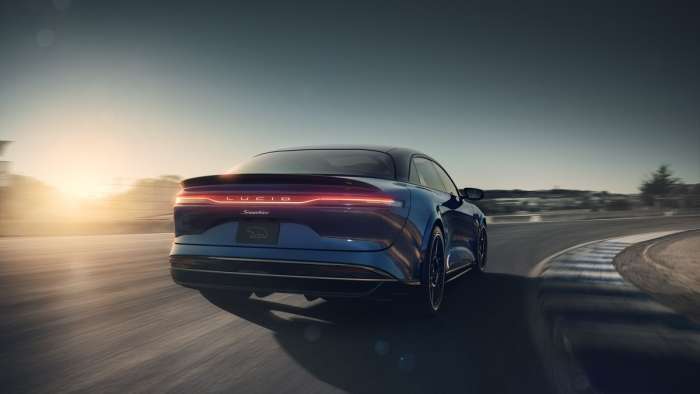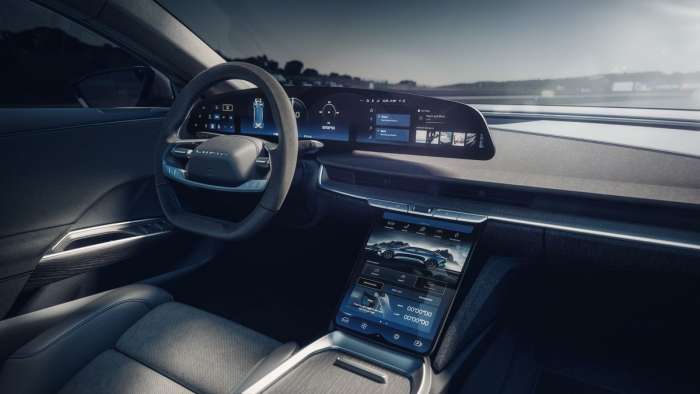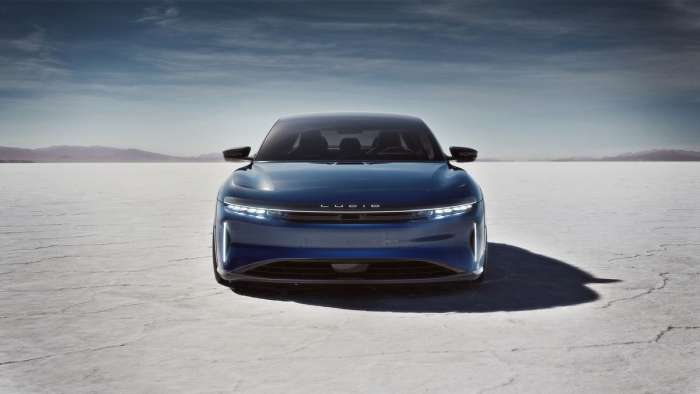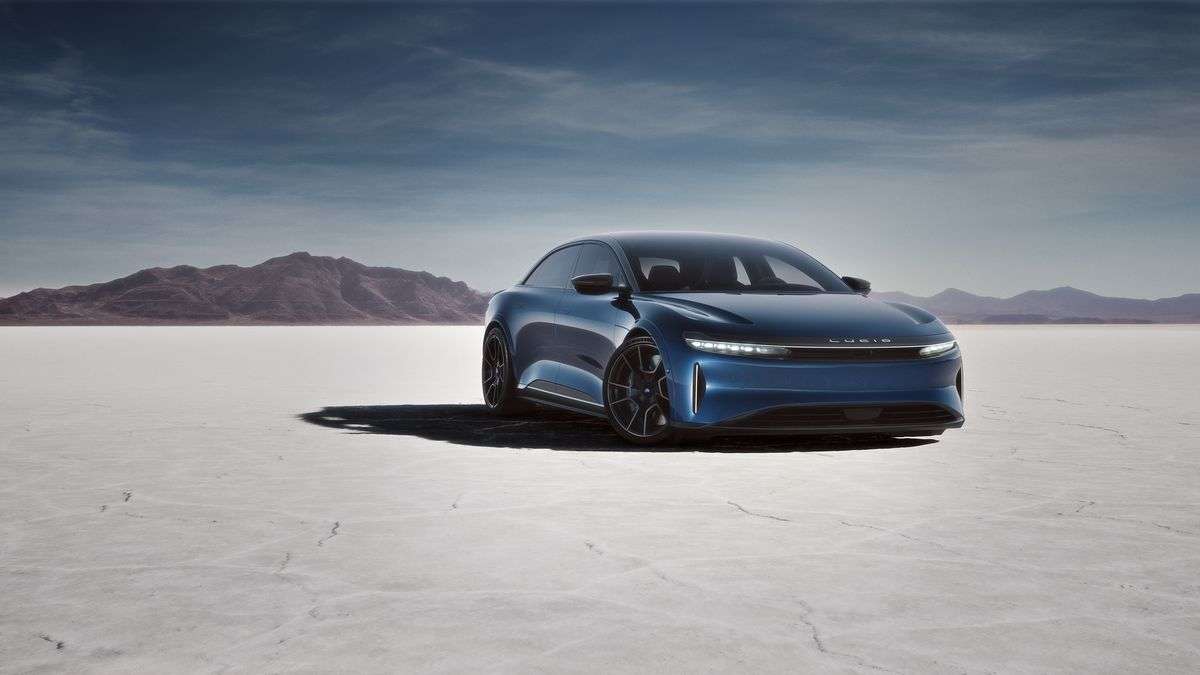Lucid's range-topping, Tesla Plaid-beating Air Sapphire is scheduled to enter production in the first half of this year and is currently undergoing testing and tuning to make sure it's every bit the world-beating hyper-sedan we think it'll be when it steps into the fray.
Joining the Lucid team at Virginia International Raceway, Car & Driver's Dan Edmunds recently got some seat time in the Sapphire. Turns out a tri-motor electric powertrain gives engineers an awful lot to work with, to the extent that they can virtually lengthen or shorten the vehicle's wheelbase as conditions and driving style demand. Such are the benefits of a 1200+ horsepower computer on wheels.
 A Safe (and Knowledgeable) Pair of Hands
A Safe (and Knowledgeable) Pair of Hands
Before taking up automotive journalism, Edmunds cut his teeth working in his father's racecar shop as a metal fabricator before heading to engineering school and landing jobs for different automakers in suspension development. Safe to say he knows his way around a set of coil springs, and that's likely one of the reasons Lucid invited him out to VIR for a go in their latest land-bound rocket ship.
John Culliton of Lucid's chassis and vehicle dynamics department rides along with Edmunds as they hammer (relatively) silently around the track, and the pair note areas where the Sapphire shakes its hips on corner exits or dives slightly under braking.
With enormous ten-piston calipers gripping standard carbon-ceramic rotors one would expect that latter to happen more than it does, but the Sapphire was planned from Air development Day One and the car can handle it. The rotors are constructed from "continuous weave" carbon as opposed to the "chopped" carbon fiber found in other CC discs and are three times as heat-conductive.
Related Story: Lucid's Motors Are Powering Formula E Race Cars
VIR's combination of hills, fast sweepers and tight, technical bits make it a great place to tune a super-sedan, though it's one of many tracks that the Sapphire team has visited in their quest to build an all-time great performance car. With some testing laps in the bag the pair head back to the pits, where calibration manager Esther Unti joins them with her laptop which is full of Lucid-developed control programs and can be plugged into a handy post in the vehicle's trunk. Around 90% of the code that lets the Sapphire do what it does was written by Lucid in-house; it's very much their baby.
A Matter of Software Tuning
The mechanical parts of the Lucid Air Sapphire have already been mostly decided on, including bespoke Michelin Pilot Sport 4S tires and the electronically controlled Bilstein dampers whose rebound and compression valves, like so much else on the Sapphire, are software-controlled. Like the dampers, the car's power-steering assistance level and the blend between mechanical and regen braking behave differently in each of the Sapphire's drive modes.
 Infinitely Configurable
Infinitely Configurable
With a theoretical 2,010 horsepower available from the Sapphire's trio of electric motors, torque management has been a major focus for the development team. For drag racing you'll get a 25/75 split front-back or if you prefer to travel sideways vaporizing your tires under an avalanche of torque the Sapphire will send a small amount of power to its front wheels "to make slides more predictable and achieve higher sideslip angles."
Horsing around aside, the car's tri-motor powertrain gives Lucid's engineers the ability to set it up and have it handle any conditions thrown at it like it was built for that scenario alone. Torque vectoring on the rear axle (where two of the motors live) can be achieved much more smoothly than brake-based systems, with one wheel harvesting energy while the other puts the power down.

Also contained in Unti's laptop's box of tricks is the Sapphire's "wheelbase module" which allows her to fine-tune torque delivery to make it feel to the driver like they're working with a shorter or longer wheelbase depending on how and where they're driving. The handling boffins make adjustments to torque delivery and throttle sensitivity before sending Edmunds out on track again. He soon discovers that their tweaks have eliminated the Sapphire's previous issues and his confidence in this supremely powerful car increases.
Related Story: Lucid Gravity SUV Will "Take Expectations To A Much Higher Level"
Images by Lucid Motors licensed by CC BY 4.0.
James Walker is an Automotive Journalist at Torque News focusing on Lucid Motors. If it's got wheels he's interested, and he's looking forward to seeing what kind of cars the EV revolution brings us. Whether it's fast, slow, new, or old, James wants to have a look around it and share it in print and on video, ideally with some twisty roads involved. You can connect with James on Twitter, Instagram, and LinkedIn.






Comments
Bring the Lucid Air Sapphire
Permalink
Bring the Lucid Air Sapphire to the Virginia City Hill Climb, where drivers get tear up a real Nevada mountain highway as quickly as they can in sub-four minute shots of adrenaline. Show us what the Sapphire BEV can do on a real world road at 6,000 feet where ICE cars gasp for oxygen.